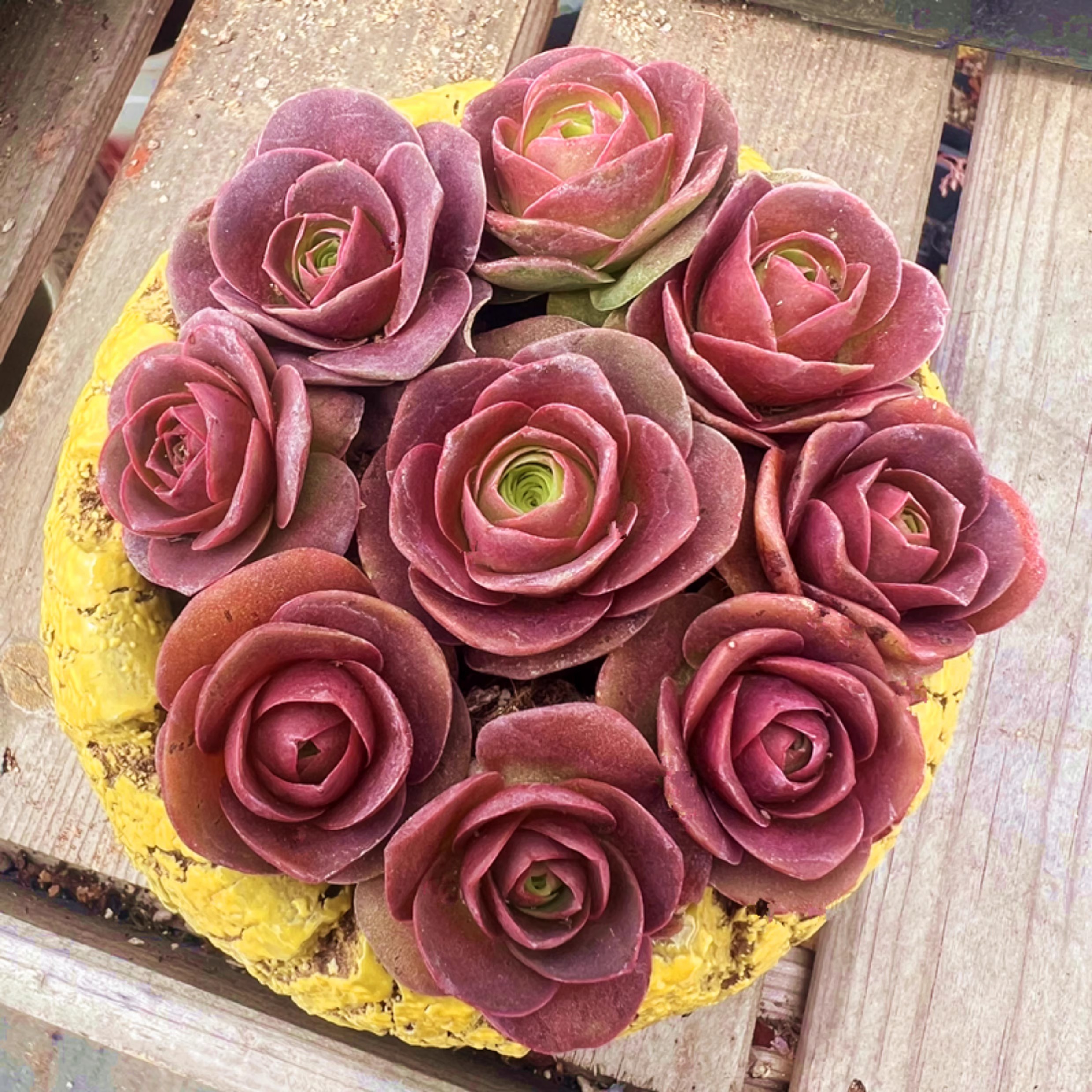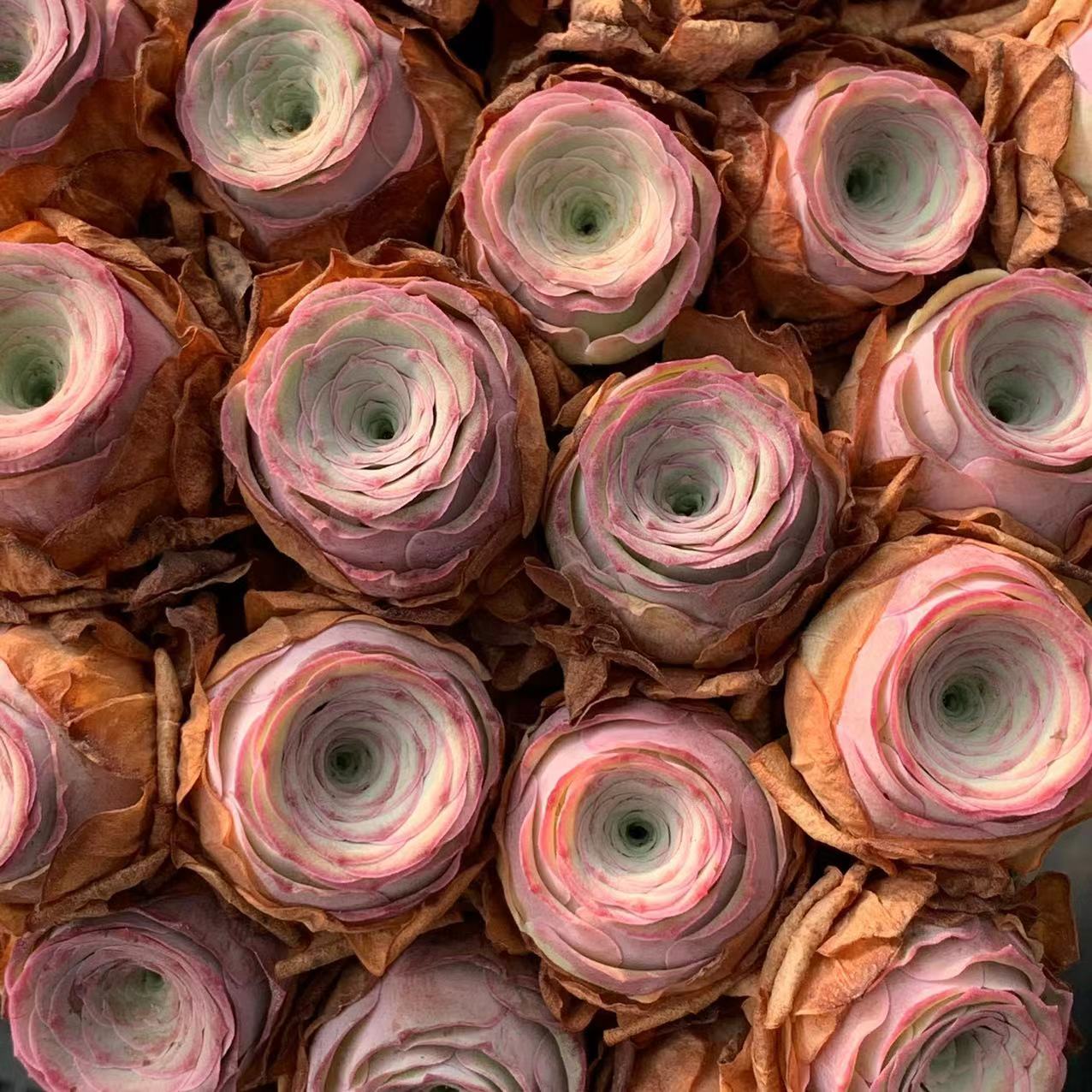
You can grow a pink mountain rose plant at home with just a few steps. This plant stands out for its rose-shaped leaves and soft pink color. Many people love it because it needs little water and thrives in sunlight. Place your plant where it gets plenty of sunlight and use well-draining soil to help it flourish. Check out the table below for quick facts on what your pink mountain rose needs for healthy growth:
| Parameter | Requirement/Value |
|---|---|
| Light Exposure | Full Sun |
| Soil Quality | Well-draining soil |
| USDA Hardiness Zones | 8 – 11 |
| Watering | Low, drought-tolerant |
| Fertilizer N-P-K | Balanced 10-10-10 or similar |
| Mature Height | 6 – 12 inches |
| Mature Spread | 2 – 3 feet |
If you are new to plant care or a seasoned succulent fan, you will find pink mountain rose easy and rewarding to grow.
Key Takeaways
- Pink mountain rose succulents need lots of sunlight. They also need soil that drains water well. This helps them stay healthy and keep their pink color. Water the plant deeply, but only when the soil is dry. This stops root rot and helps the plant handle dry times. Feed the plant once a year in early spring. Use a balanced fertilizer at half strength. This helps the plant grow without hurting it. From May to September, the plant rests. Water it less and keep it in a cooler, shady place. This helps the plant rest. Watch for pests like mealybugs and aphids. Treat them early with rubbing alcohol or insecticidal soap. This keeps your plant safe.
Pink Mountain Rose Plant Basics

The pink mountain rose stands out because of its rose-like shape and soft pink color. You will notice that this plant grows in tight rosettes, making it look like a blooming flower all year. Many people love this plant because it stays small, usually reaching about 6 to 12 inches tall. It spreads slowly, so you can enjoy its unique look without worrying about it taking over your space.
Light
Your pink mountain rose loves sunlight. Give your plant at least 6 hours of bright, indirect sunlight every day. If you grow it indoors, place it near a south-facing window. You can also use a grow light if your home does not get enough natural sunlight. Too little sunlight will make the plant lose its color and shape. If you see the leaves stretching or fading, move the plant to a brighter spot.
Tip: Rotate your plant every week. This helps all sides get equal sunlight and keeps the rosette shape even.
Temperature
Pink mountain rose does best in mild climates. It prefers USDA hardiness zones 9b to 10b. The plant can handle short cold snaps down to 20°F, but it grows best when temperatures stay above 41°F. Cold, wet soil can cause damage, so keep the plant dry during chilly weather. If you live in a colder area, bring your plant inside before frost arrives. You can also place it near a wall or patio for extra warmth.
| USDA Zone | Minimum Temp | Preferred Min Temp | Tolerance Threshold | Soil Condition |
|---|---|---|---|---|
| 9b-10b | 25-35°F | 41°F | 20°F (short time) | Dry |
Soil
You need well-draining soil for your pink mountain rose. This plant hates wet roots. Use a cactus mix and add perlite or pumice to improve drainage. Experts say that soil with low organic matter and lots of perlite or pumice works best. This mix lets water flow through quickly and keeps the roots healthy. If you use regular potting soil, mix in extra perlite to help with drainage. Always use a pot with holes at the bottom.
Note: Well-draining soil is the key to healthy growth. Avoid letting water sit in the pot, as this can cause root rot.
Succulent Care Routine
Watering
Watering your pink mountain rose can feel tricky at first, but you will get the hang of it. This plant likes deep but infrequent watering. Let the soil dry out completely before you water again. If you keep the soil wet, the roots may rot. Always check the soil with your finger. If it feels dry all the way down, it is time to water.
During summer, your pink mountain rose goes dormant. The plant slows down and does not need much water. You should water less often in these months. Sometimes, you may only need to water once every three to four weeks. In winter, the plant wakes up and starts to grow. This is when you should water more often, about every one to two weeks, but always let the soil dry out first.
Tip: Use a pot with drainage holes. This helps extra water escape and keeps your plant healthy.
Feeding
Your pink mountain rose does not need much food. You can feed the plant once in early spring, just as it starts to grow. Use a balanced fertilizer, like a 10-10-10 mix. Mix it at half strength so you do not burn the roots. Too much fertilizer can harm the plant, so less is better. If you see strong growth and healthy leaves, you do not need to feed again until next year.
- Feed once in early spring.
- Use a balanced fertilizer at half strength.
- Skip feeding during summer dormancy and late fall.
Dormancy
Pink mountain rose has a special resting time called dormancy. This happens from May to September. During this period, the plant stops growing and needs less water. You should move the plant to a cooler spot if possible and keep it out of harsh sunlight. Do not worry if the leaves look a little dull or dry. This is normal.
When dormancy ends, the plant will perk up and start to grow again. You can return to your regular care routine. Adjust your water needs and feeding schedule to match the plant’s active growth. Watching for these changes helps you give the best plant care all year.
Note: Dormancy is a natural part of the pink mountain rose life cycle. Adjust your care to match the plant’s needs, and you will see healthy growth when the season changes.
Propagation and Repotting

Propagation Steps
You can easily grow new pink mountain rose plants at home. The best way to do this is by using offsets, which are small rosettes that form around the base of the main plant. Here’s how you can do it:
- Wait until you see healthy offsets growing near the main plant.
- Gently remove the offset using clean fingers or a small tool. Try not to damage the roots.
- Let the offset dry for a day or two. This helps the cut area heal and prevents rot.
- Place the offset on top of well-draining soil. Do not water right away.
- After a few days, lightly mist the soil. Keep the soil just barely moist until you see roots forming.
- Once the offset has roots, care for it like a mature plant.
Tip: Propagating in spring or early fall gives the best results. The plant is more active and will root faster.
Repotting Tips
Your plant will need a new pot every couple of years. Repotting keeps the roots healthy and gives the plant more room to grow. Here’s what you should do:
- Choose a pot that is just a bit bigger than the old one. Make sure it has drainage holes.
- Use fresh, well-draining soil. A cactus mix with extra perlite works great.
- Gently remove the plant from its old pot. Shake off loose soil and check the roots.
- Trim any dead or mushy roots with clean scissors.
- Place the plant in the new pot and fill in around it with soil.
- Wait a few days before watering. This helps the roots settle and prevents rot.
Note: Repotting is a good time to check for pests or signs of disease. Healthy roots mean a happy pink mountain rose.
Plant Health and Troubleshooting
Pests
You might notice tiny bugs on your pink mountain rose from time to time. The most common pests are mealybugs and aphids. These insects like to hide in the spaces between the leaves. If you see white, cotton-like spots or sticky residue, you probably have a pest problem. You can remove these bugs by dabbing them with a cotton swab dipped in rubbing alcohol. For bigger infestations, try spraying your plant with a gentle insecticidal soap. Always check new plants before bringing them home, so you do not spread pests to your collection.
Tip: Keep your plant in a spot with good air flow. This helps prevent pests from settling in.
Diseases
Most diseases happen when the plant stays too wet. Root rot is the biggest problem for pink mountain rose. You might see mushy stems or black spots on the leaves. If this happens, take the plant out of its pot and check the roots. Cut away any soft or dark roots with clean scissors. Let the healthy roots dry for a day before repotting in fresh, dry soil. Fungal spots can also appear if water sits on the leaves. Try to water the soil directly and keep the leaves dry.
| Disease | Signs | What to Do |
|---|---|---|
| Root Rot | Mushy roots, wilting | Remove rot, repot, dry out |
| Fungal Spots | Brown/black dots | Remove leaves, improve air |
Common Problems
Sometimes, your plant may look sad even if you follow all the care steps. Here are a few things you might see:
- Leaves turning yellow: You may be watering too much.
- Leaves shriveling: The plant probably needs more water.
- Stretching or faded color: The plant wants more sunlight.
- Slow growth: The plant could be resting or needs fresh soil.
Note: Watch your pink mountain rose closely. Small changes can help you fix problems before they get worse.
You now know how to help your pink mountain rose thrive. Give it sunlight, well-draining soil, and the right watering routine. This plant stays happy with simple care and rewards you with beautiful rosettes. Why not try growing one yourself? Share your stories or questions in the comments. Your tips might help someone else in the community! 🌱
FAQ
How often should I water my pink mountain rose?
You should water only when the soil feels dry. In summer, water every three to four weeks. In winter, water every one to two weeks. Always check the soil first.
Can I grow pink mountain rose indoors?
Yes, you can! Place your plant near a bright window. A south-facing window works best. If your home is dark, use a grow light to help your plant stay healthy.
Why are my succulent’s leaves turning yellow?
Yellow leaves usually mean you watered too much. Let the soil dry out before you water again. Remove any yellow leaves so your plant can focus on new growth.
Do pink mountain rose succulents bloom?
Yes, they do! You might see small, star-shaped flowers in spring or early summer. The blooms look pretty, but the plant’s main beauty comes from its rose-like leaves.